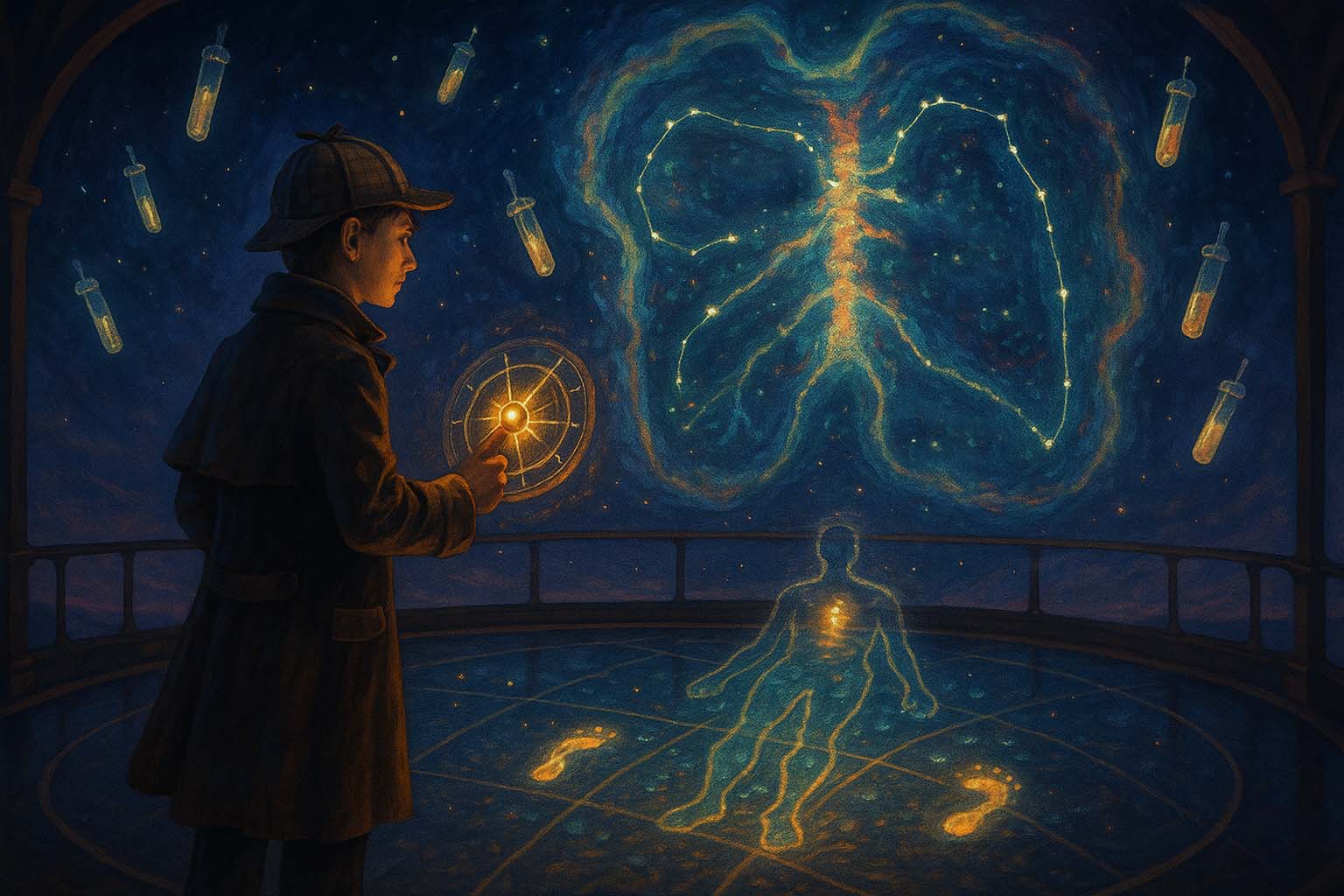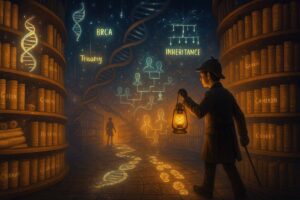
Nuclear Medicine
- Posted by admin
- Categories Diagnostics & Interventional Medicine
- Date May 24, 2025
- Comments 0 comment
The Molecular Detective’s Domain – Cracking the Cases of Function, Flow, and the Radiance of Hidden Clues
1. Introduction: The Scene of the Specialty
Step into the shoes of a Nuclear Medicine sleuth.
This is the realm of radioactive whispers—where organs reveal their function before form fails, and disease lights up long before symptoms speak. Nuclear medicine specialists follow tracer paths through bone, brain, thyroid, and tumour, watching physiology unfold in real time. Welcome to a world where invisible molecules map invisible mysteries, and where your camera doesn’t just capture images—it captures insight.
2. Key Mysteries They Solve (Common Conditions & Roles)
These detectives specialise in solving cases involving:
- Cancer Detection, Staging, and Surveillance – PET scans reveal active malignancy and guide targeted therapy.
- Thyroid and Parathyroid Disorders – using iodine and sestamibi to trace overactive tissue.
- Bone Scans – identifying metastases, fractures, or infection before anatomical change appears.
- Renal and Cardiac Function Studies – visualising perfusion, filtration, and ejection fractions.
Each case is a functional fingerprint—a physiological trail illuminated by isotopic light.
3. Their Trusted Tools & Techniques
Every detective has their kit—and in Nuclear Medicine, tools may include:
- Radiotracers – such as 18F-FDG, Tc-99m, I-131, and Ga-68 for specific organ targeting.
- Gamma Cameras and SPECT – single-photon imaging for bone, thyroid, and cardiac studies.
- PET-CT and PET-MRI – hybrid imaging combining function with anatomical localisation.
- Theranostics – using radiotracers not only to diagnose but also to treat (e.g. radioactive iodine, Lutetium therapy).
This is not just imaging—it’s molecular storytelling, where function speaks first, and form follows later.
4. The Charms of This Field: Why It Captivates the Curious
- Functional Focus: See how organs work, not just how they look.
- Early Detection Power: Spot disease before damage is done—true preventative insight.
- Therapeutic Innovation: Treat thyroid cancer, neuroendocrine tumours, or bone mets with targeted radiotherapy.
- Scientific Intrigue: Combine physics, pharmacology, physiology, and imaging into one beautiful puzzle.
This is where you trace the path of disease from molecule to map.
5. Challenges: The Toughest Cases They Face
- Subtlety and Sensitivity – Interpreting scans with faint uptake or borderline patterns.
- Radiation Safety and Regulation – Handling isotopes with care and managing exposure risks.
- Integration with MDTs – Translating findings into actionable decisions for oncologists, endocrinologists, and surgeons.
- Technology Access and Cost – PET and theranostics are not always widely available.
But the seasoned nuclear medicine specialist knows: even a faint glow can guide the sharpest decisions.
6. Famous Cases and Hallmark Clues
- The “Classic Presentation” – FDG-PET scan revealing metabolically active lymph nodes in lymphoma staging.
- The “Zebra” – Unexpected MIBG uptake in an adrenal mass: pheochromocytoma.
- The “Aha Moment” – Cold thyroid nodule on scintigraphy prompting targeted biopsy for malignancy.
7. Your Training Trail: How to Join the Investigation
To become a Nuclear Medicine detective:
- Start in radiology, internal medicine, or endocrinology, then specialise in nuclear medicine through dedicated fellowships.
- Study radiopharmaceutical physics, tracer kinetics, and advanced hybrid imaging modalities.
- Develop insight into oncological, endocrine, renal, and cardiovascular physiology.
- Collaborate deeply—your scan findings often direct the course of an entire treatment plan.
Whether pinpointing tumour activity or treating metastatic disease with precision-targeted isotopes, your work fuses diagnosis and therapy like few specialties can.
8. Final Words: The Signature of the Nuclear Medicine Detective
Nuclear medicine detectives light up the truth from within.
They read radiation like a roadmap, tracing where biology speeds up, slows down, or goes wrong.
They catch cancer in its earliest flickers, follow therapy as it lands, and offer hope when structure alone can’t explain the story.
So if you’re drawn to seeing what lies beneath—before it’s visible to anyone else—then this glowing, graceful specialty is yours to illuminate.
You may also like

Clinical Pharmacology

Clinical Genetics

